Epstein-Barr Virus
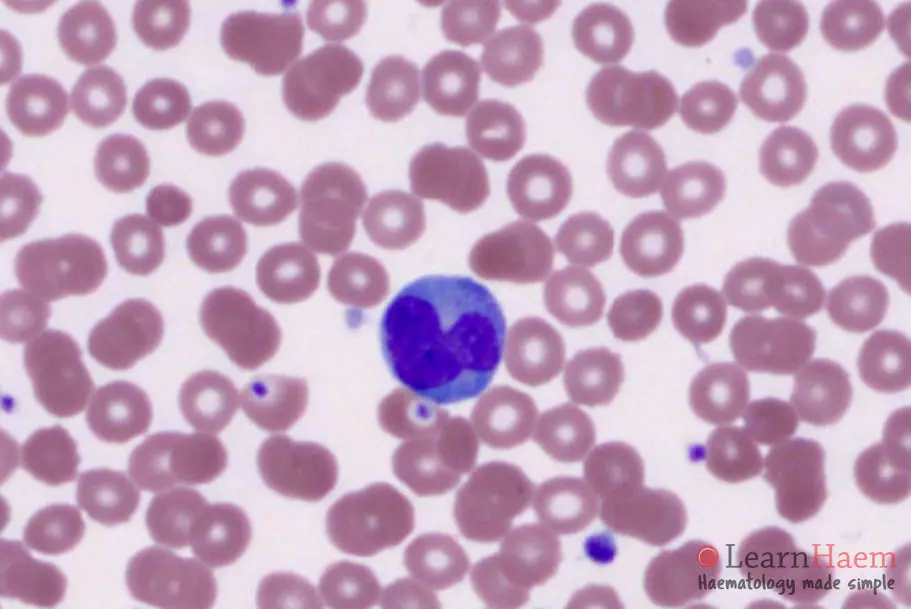


0 x
- Children and young adults with lymphadenopathy, hepatosplenomegaly and sometimes lymphoyctosis
- Typical features:
- Large, atypical lymphoid cells
- Intensely basophilic cytoplasm
- Occasional cytoplasmic blebs
- Scalloping around RBCs
- May be associated with red cell agglutination
Bordetella Pertussis
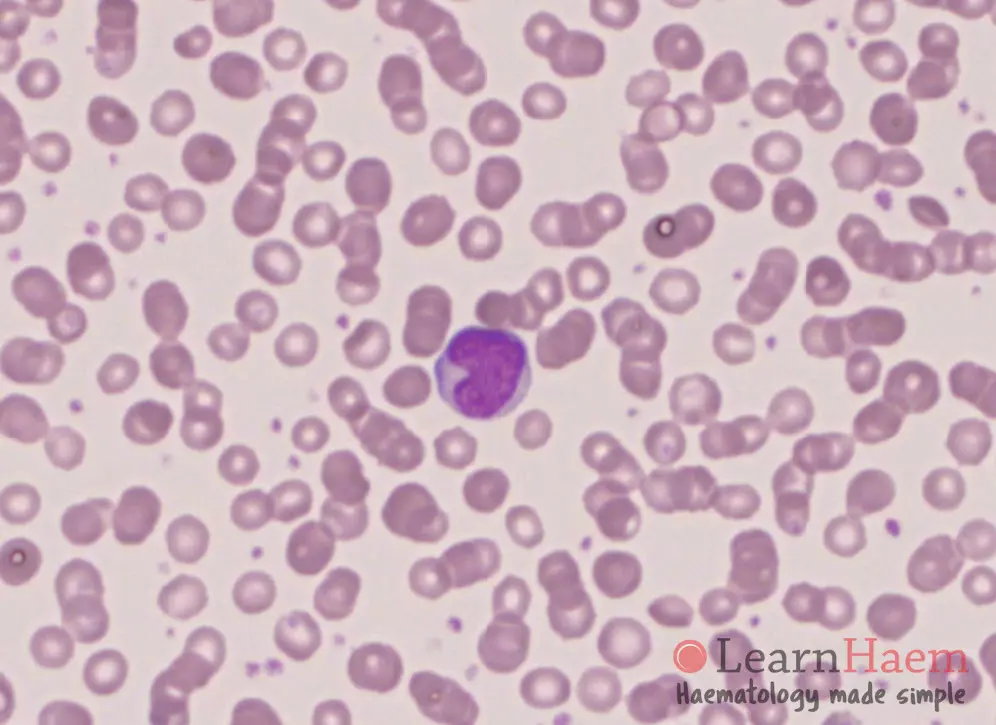


0 x
- Paediatric patients with cough and dyspnoea (whooping cough)
- Associated with mature lymphocytosis
- Typical features:
- Cleft nuclei
- Basophilic cytoplasm
- Scant cytoplasm
- Condensed chromatin
Large Granular Lymphocytes
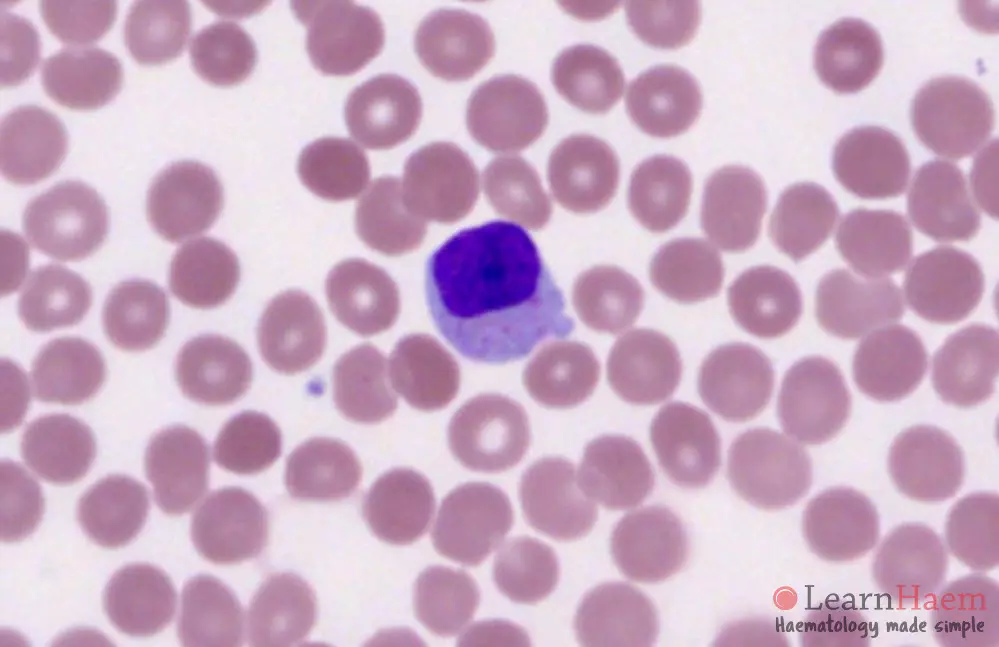
- Post-viral infection, organ transplant, chemotherapy
- Usually transient; if persistent and associated with anaemia or neutropaenia, suspicious of LGL leukaemia
- Features:
- Large lymphoid cells with azurophilic granules
- Mature chromatin
- Copious cytoplasm
Dengue Infection
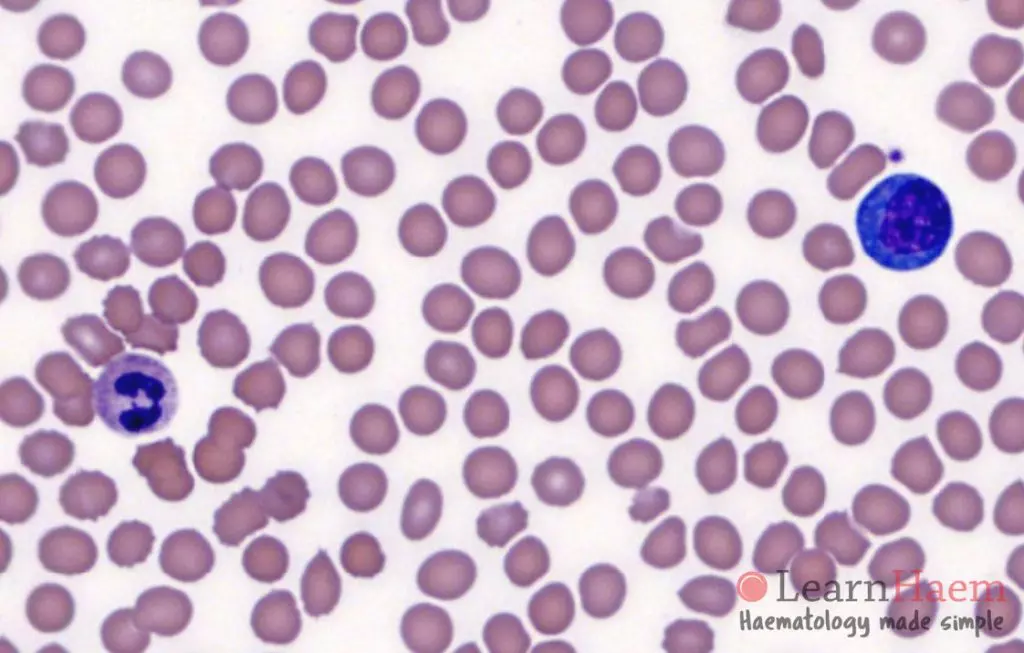


0 x
- Common viral infection in the tropics affecting all age groups. Typical features include fever, maculopapular rash, myalgias, bicytopaenia (leukopaenia and thrombocytopaenia) and transaminitis.
- Features:
- Large, atypical lymphocytes
- Intensely basophlic cytoplasm
- Nuclear countour usually regular
- Genuine thrombocytopaenia
- May have profound neutropaenia
Polyclonal B lymphocytosis
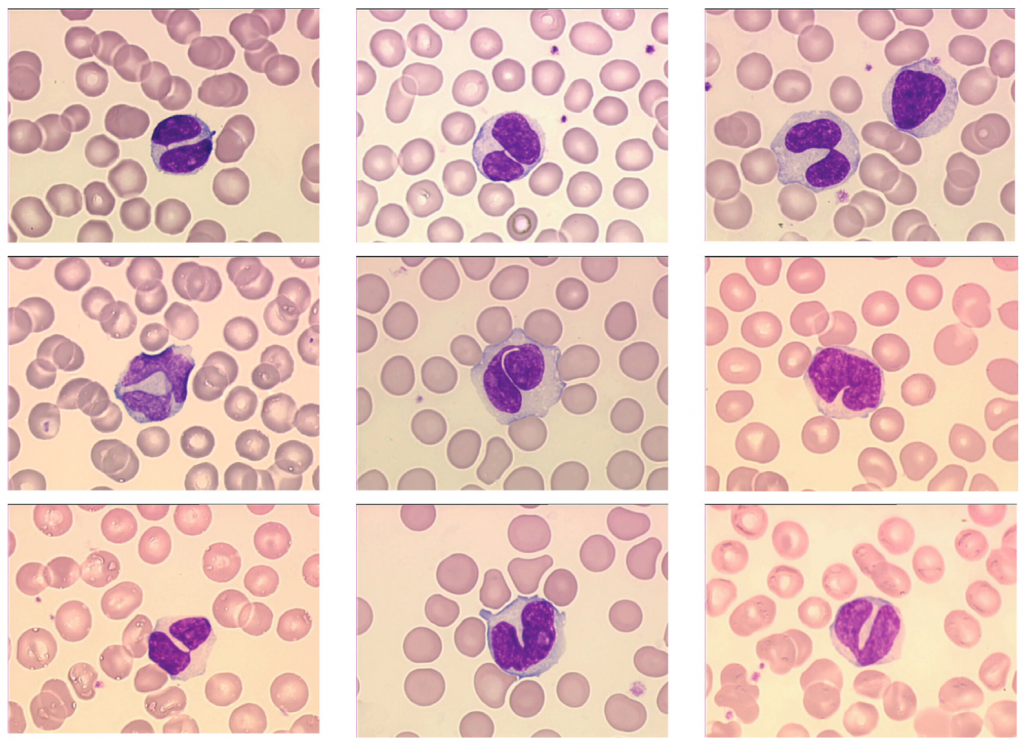
- Typically middle-aged female smokers
- Associated with polyclonal increases in IgM
- Cytogenetic abnormalities of chromosome 3, especially +i(3)(q10)
- Rarely progresses to lymphoma
- Morphological features:
- Binucleate large lymphoid cells
- Abundant, basophilic cytoplasm
- Nuclei may have slight indentations if not clearly bi-lobed
- Mature chromatin, sometimes with prominent nucleoli

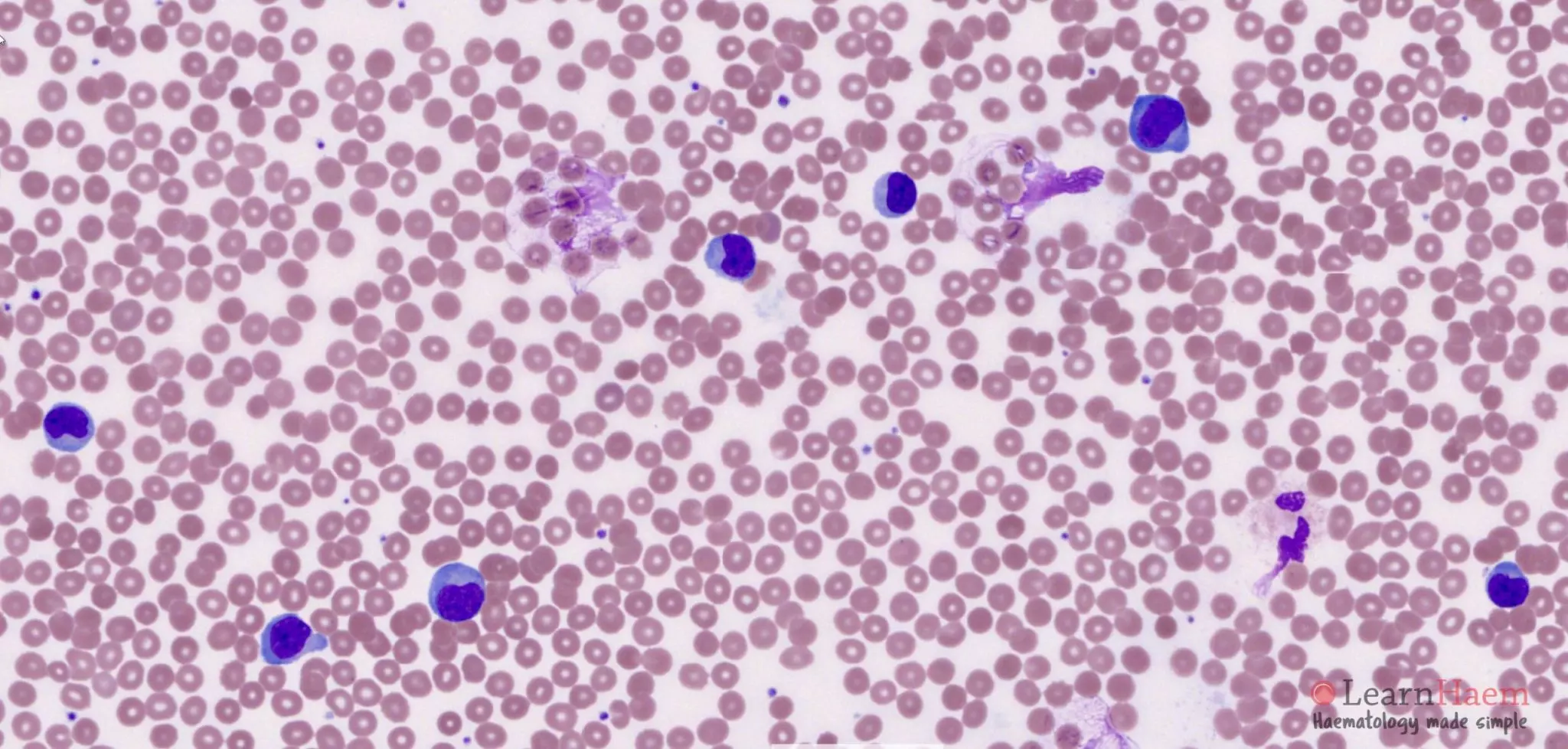
Leave A Comment